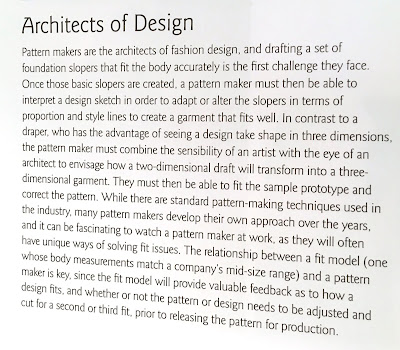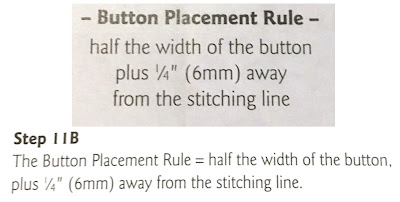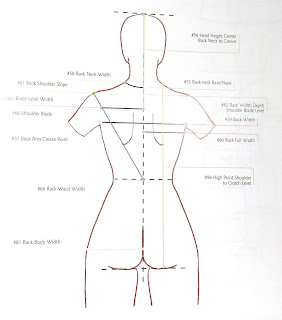More book reports. Because summer reading.
I'm not sure how much you enjoy these book reports, but I must reinterate that sometimes I put things on my blog so that I can find them later. It's a public storage unit.
Spoilers: I liked these books. Apologies for the terrible photos.
You can click on them to make them bigger, or just race on by them to get to the ones Ienbiggened to discuss.
Two of three books in a series by Francesca Sterlacci for Lawrence King's sewing book collection. These are branded as the University of Fashion, which is a thing Sterlacci is doing with several other sewing related businesses. I would dig into that a little more, but it's summer and I have still have the summer job.
and of course
Putting this here to shout out the collaborators. Good job all around.
We start at the very beginning. Kind of the James Michener style of writing: start with the big bang; work out from there. Sterlacci has another book on fashion history that is well reviewed. I'll get there.
The nice thing about this is that it introduces some basic forms we'll refer to later. Schweet!
 |
| "Clockwise from left: Peplos; Ionic chiton (elbow length); Doric chiton; Himation" from caption that got cut off |
We cover the beginning of the pattern industry,
The following paragraph is a nice reminder to today's sewists about how important a fit model is to a design house.
It's not a factory of math. Every pattern line fits differently because every pattern house uses a different model.
Author's message below:
I enjoyed this book. The course of study is clear, the lessons flow from one to the next, there are many examples and explanations for the choices that are made.
Where to start and why
Most of this book is pictures of drawing lines. The photos are well captioned, each chapter has a nice introduction and an example photo.
We are not going to sew these things together. That is another book in the series (not reviewed here, as it wasn't available at my library yet),
Seam allowances will be touched on, but lightly.
Why are we scooping out a lower portion? I don't doubt it's important, but we don't learn why. It makes sense (fronts and backs of sleeves don't look the same - usually a little more in the back and a little less in the front so that the sleeve is set a touch forward (remember we move our arms mostly foreward). We are also drafting a fitted sleeve with an elbow dart, which is a great moment in my personal sleeve journey.
And yes, I have had a personal sleeve journey.
Remembering that this is a self-study course, there will be tips and reflections.
Button placement rule I did not know, and am going to slap up on the wall of the cave. I get tired of faking it. I do love how the caption just repeats the information in the photo.
This is a good course of study. And a nice refresher course.
Sure, I like drawings over photos, but there are loads of photos of every step.
And some boss rocking charts
The math is done for you for full and semi circle skirt charts as well.
DAMN.
The measurement guide is handy
Although the back makes it look like you're measuring for a gimp suit.
And for Ithaca Maven, the basis of how to draft your own damn pants pattern.
The Big Base Grid.
When you rotate it, it turns into this:
And ease is built into the measurement taking.
We aren't going to explain how to draft a fly.
It's not like that button thing.
Did not know! Learning!
On to the draping book.
Same author, same approach. Lessons building on lessons.
We begin with the masters of the hands on approach, and the photo that launched a thousand half scale model sales.
This is the book I want to read:
Pauline Trigere draping on a real live human.
I'm curious for the basic procedure: you can't stick a pin or tape a line to a human. Should I make a long line bodice to pin into...no. That's going to hurt as well.
There will be poking. How do I avoid poking? Tape?
Jeanne Lanvin, 1929, also working on a human.
The book demonstrates draping on a dress form to create a pattern. Lots of photos, clear illustrations, showing you how to create basic patterns (bodice, skirt, sleeve) from the form. I'm craving something that connects this practice to creating something unique, and this was not that book for me.
Forgot to mention there are videos online for these lessons!
And they are available for 19.95$ a month. Like Bluprint, you could probably boil through what you needed in a month, and then cancel. I don't have time to do that until October, but I'll think about it. The photos in these books seem to be screenshots (according to the publisher's page credits) and they catch clear points of action.
There is a free mini-subscription available by signing up for the newsletters on the website, with some nice benefits. So, a free sample to check out the goods.
But this is a book report.
Sterlacci and her team have created a clear format for these books, and while there's the occasional boo-boo of mismatched photo to caption, the idea is clear enough that you can actually spot those few errors because the book taught you well.
 |
| The cover got warped after being left open for photos for an hour. |
Downsides to these books: they are made of heavy paper on a less than sturdy spine. When I picked these up at the library, they were being held behind the desk because of how floppy they were. They needed to be supported on the front and back or they would start to tear.
Ruh roh.
They are sewn signatures. I like a sewn book, thank you.
Also available:
Ida approves.










































great reviews, even thought my blocks are pretty much based on Winifred Aldrich, I still will happily read other pattern drafting books, I have yet to drape a full garment and have been toying with buying a half scale model for a long time..... love to see everyone elses library, thank you for sharing
ReplyDeleteThanks! I found a cheap half scale model on eBay, and then I started seeing them at all the estate sales. People use them for jewelry display? You can add a little padded suit to a drawing manikin and use even less fabric - it's super handy for figuring out weirdly designed clothing (the Six Napoleons from DogStar comes to mind) (or Studio Faro's twisty work). It's a low risk fun time.
DeleteThis was quite interesting - thanks.
ReplyDeleteThank you. I do gas on sometimes. Thanks for bearing up with it.
DeleteHi, thanks for reviewing the book, I'd like to know about the bodice block drafting method used in this book. Is it similar to any other books or is it some new technique?
ReplyDeleteIt's nothing new. The organization of the chapters is new (it's a workbook with things to check off). There are a lot of books out there that teach the same thing, it's hard to know where to start except at your local library.
Delete